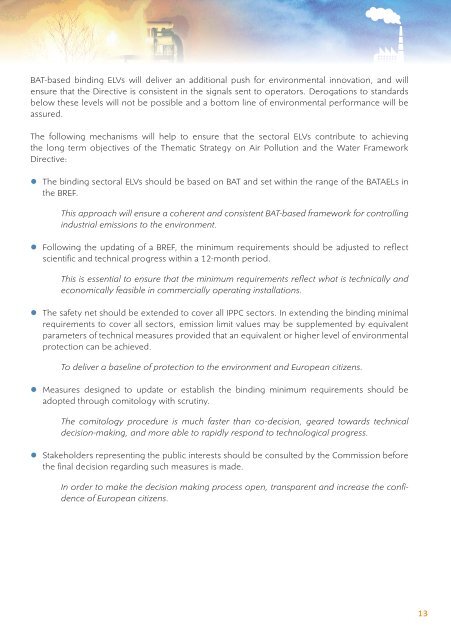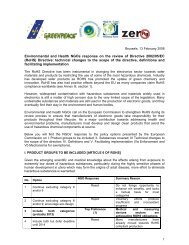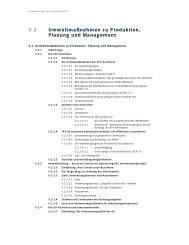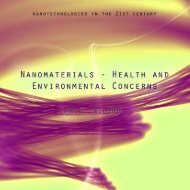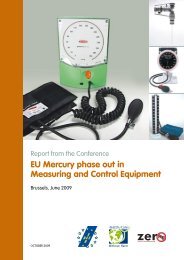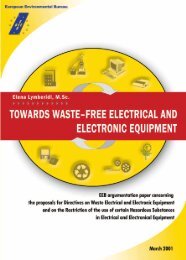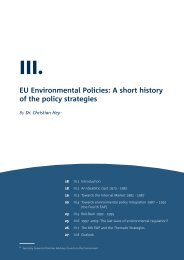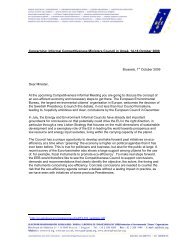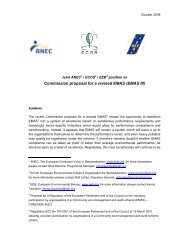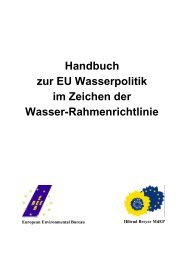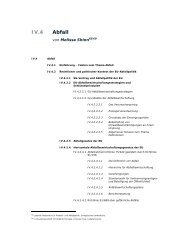A push for cleaner industrial production - EEB
A push for cleaner industrial production - EEB
A push for cleaner industrial production - EEB
You also want an ePaper? Increase the reach of your titles
YUMPU automatically turns print PDFs into web optimized ePapers that Google loves.
BAT-based binding ELVs will deliver an additional <strong>push</strong> <strong>for</strong> environmental innovation, and will<br />
ensure that the Directive is consistent in the signals sent to operators. Derogations to standards<br />
below these levels will not be possible and a bottom line of environmental per<strong>for</strong>mance will be<br />
assured.<br />
The following mechanisms will help to ensure that the sectoral ELVs contribute to achieving<br />
the long term objectives of the Thematic Strategy on Air Pollution and the Water Framework<br />
Directive:<br />
• The binding sectoral ELVs should be based on BAT and set within the range of the BATAELs in<br />
the BREF.<br />
This approach will ensure a coherent and consistent BAT-based framework <strong>for</strong> controlling<br />
<strong>industrial</strong> emissions to the environment.<br />
• Following the updating of a BREF, the minimum requirements should be adjusted to reflect<br />
scientific and technical progress within a 12-month period.<br />
This is essential to ensure that the minimum requirements reflect what is technically and<br />
economically feasible in commercially operating installations.<br />
• The safety net should be extended to cover all IPPC sectors. In extending the binding minimal<br />
requirements to cover all sectors, emission limit values may be supplemented by equivalent<br />
parameters of technical measures provided that an equivalent or higher level of environmental<br />
protection can be achieved.<br />
To deliver a baseline of protection to the environment and European citizens.<br />
• Measures designed to update or establish the binding minimum requirements should be<br />
adopted through comitology with scrutiny.<br />
The comitology procedure is much faster than co-decision, geared towards technical<br />
decision-making, and more able to rapidly respond to technological progress.<br />
• Stakeholders representing the public interests should be consulted by the Commission be<strong>for</strong>e<br />
the final decision regarding such measures is made.<br />
In order to make the decision making process open, transparent and increase the confidence<br />
of European citizens.<br />
13


